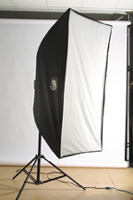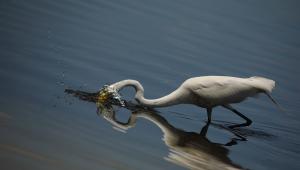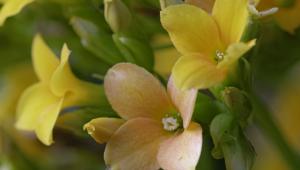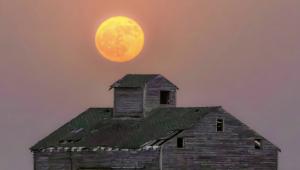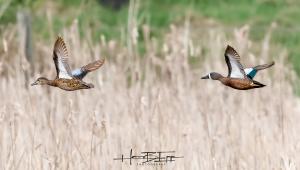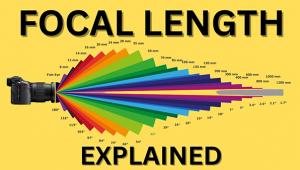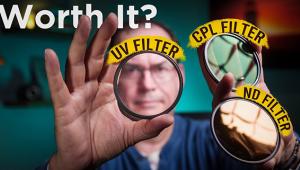AlienBees Flash Units
Whats The Buzz
|
Could you grow to love the yellow and black bumblebees on the "AlienBees" logotype? You better--it's plastered on everything. Each monolight has three bumblebees and two different logos. The bees are everywhere--stitched onto the softboxes, affixed to the light stands, and even silk-screened, in color, across every cordura carry bag. Yikes! After settling down from our initial shock one thing became immediately clear--these guys made a big mistake. Instead of sending me their bargain $54.95 13 ft light stand, they clearly substituted one of those $120 Italian-made Cine stands. Instead of the inexpensive $20 backlight stand I ordered, I got a beautifully made $40 stand. Instead of the flimsy $120 30x60" softbox, I got a $300 heavy-duty softbox with a clever aluminum rotating speed-ring, probably worth another $50. I never appreciate it when a manufacturer tries to sneak in the good stuff for the review but then sell the cheap stuff to the public. We checked into it and to my utter amazement, this was the cheap stuff! Now we're getting somewhere. The flash units themselves were just as thought provoking. All three units--the 160 ws B400, the 320 ws B800, and the 640 ws B1600--all share identical housings and control panels. The design itself is fairly tame. A box-like device made of molded Lexan polycarbonate, each unit features a user-replaceable Xenon flash tube, household base type modeling lamp (known in my house as a "light bulb"), stepless five f/stop power control (full to 1/32 power), total control of modeling lamp output, a built-in cooling fan for prolonged softbox operation, built-in slave, Balcar type reflector mount, and a good firm light stand clamp. |
|||
Quality Build Softbox Setup Assembly nightmares aside, this was some deal. A big pro box suitable for large sets, shipped with a great speed-ring and a removable internal diffuser for $119.95. How they do it for this price is beyond me. The large 48" silver interior/white exterior umbrella was equally nice, and priced at only $24.95. |
|||
Test Shoot Once I had a nice lighting setup it was time to fire away, or was it? First of all, everything I own is 1/4" phone plug and the Bees take a decidedly non-pro 1/8" socket. Luckily each unit has a built-in slave, so maybe I could use my infrared transmitter. Not so fast. While some of my very expensive pro gear will pick up the IR transmitter from anywhere in the studio, the Bees needed to be very close and have the transmitter aimed directly at the slave unit. I used the AlienBees sync cord (included with every unit) to hook one unit up to my camera, and rely on the slaves in each head to sync. Now we had a working setup, as the background lights synced perfectly with the main unit. Since I'm used to 150w halogen lamps the output of the 100w household bulbs seemed a little dim to me. AlienBees informed me that 150w halogen bulbs are available in standard household mount for around $4, so at least that's covered. Flash output was exactly as advertised. The output of the 640 ws B1600 was a 1/2 stop less than one of my 800 ws studio units and almost 1/2 stop more than a 500 ws unit, just about right. The B400 units recycle almost instantly, and even the powerhouse B1600 comes back in a little over 2 sec. The Bees allow you several modeling lamp options. You can have the lamp off, have it on full, or have it track the output of the flash proportionally. In addition, you can have the model lamp dim when the flash fires and get bright when the flash is recycled. While I would have preferred a good old-fashioned beep, this works. |
|||
Bang For The Buck My photographs looked totally unremarkable--a good thing. Color balance was spot on, recycle time constant, flash-to-flash output seemed stable. The Bees are a pleasure to use as well. Three of the small boxy units fit into a medium-sized Lightware case with plenty of room for cables and reflectors. The light stand clamp really locks these things down. A B1600 head hanging from a large Bogen boom arm and handling the big 30x60" softbox didn't budge once hung. The Lexan cases seem sturdy, and the nearly silent cooling fans do indeed keep the units cool to the touch all day. While these flash units are easy to love, it's the little things that make them stand out from the competition. Each unit comes with a nice long sync cord and 7" reflector, and even includes the 100w bulb. You can upgrade any unit to a more powerful unit for the measly sum of $25 (plus the difference in price between the two units) for two years from the date of purchase! Feeling a little queasy looking at those "Alien Green" strobes? Simply fire them off to AlienBees and they'll swap out the cases for the same $25. How do you beat that? The user replaceable flash tube is rated for 250,000 flashes, which is almost immaterial since a replacement costs only $29.95. |
|||
Honey Of A Deal According to Bees' "Creative Director" Natalina Nanni, the nuttiness has been carefully planned. Gen X'ers, claims 21-year-old Nanni, "want to gain some level of fun from everything we do, from the brands we purchase to the media we consume." Well, I don't know about that, but these are some damn good strobes for some seriously short coin. If you're in the market for some inexpensive lighting units, or just looking for some back-up units for your big ticket studio gear, you'll want to check out the AlienBees web site (www.alienbees.com). Look past the wacky colors, bumblebees, and questionable other-worldy marketing stuff, and you'll find a line of well designed, solidly made all-American monolights that deliver the goods. For more information, contact AlienBees Inc., 530 East Iris Dr., Melrose, TN 37204; (877) 714-3381. AlienBees' Notable Features
|
- Log in or register to post comments



